|
The Red Hall in past
times
|
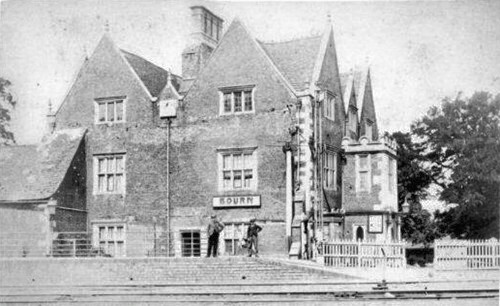 |
|
The Red Hall prior to 1893 when the name Bourn
was changed to Bourne. |
|
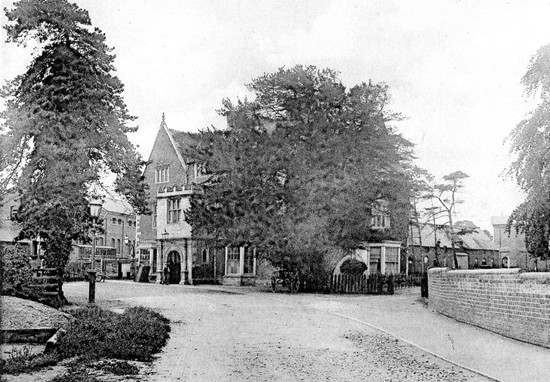 |
|
Two photographs of the Red Hall taken before
1894 when the footbridge over the line was erected. |
|
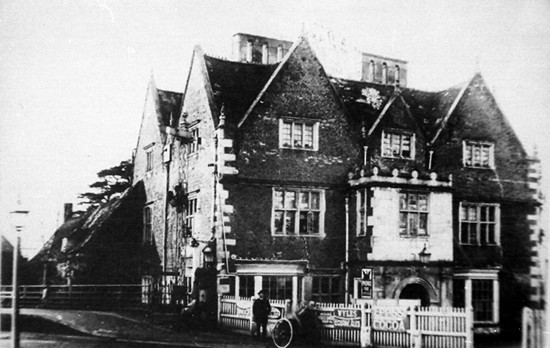 |
|
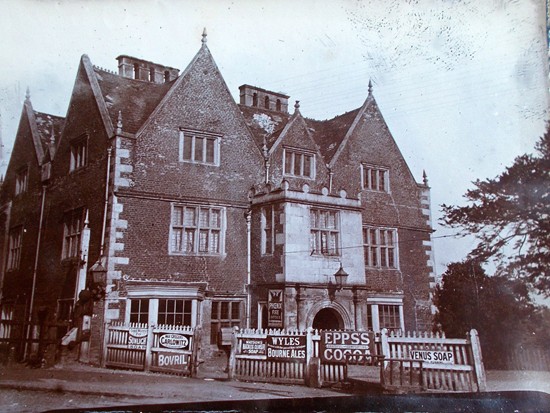 |
|
The Red Hall photographed circa 1895 with a
wealth of advertising signs along the front fence including one for
Wyles Bourne Ales. |
|
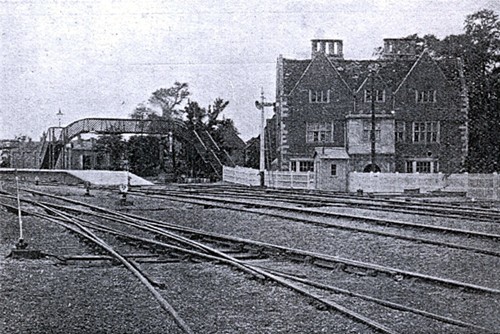 |
|
THE RED HALL IN 1900
The Elizabethan mansion, better known as the
Old Red Hall, at Bourne, which is now utilised as a railway
station, has been spared to see yet another Guy Fawkes' Day. But
for the repeated and strenuous efforts of the Society for the
Protection of Ancient Buildings, and the inhabitants of Bourne and
district, it would have been pulled down to make room for improved
railway facilities long since. It was formerly the residence of
the well-known Digby family, and here, according to local
tradition, the Gunpowder Plot was hatched, and Sir Everard Digby,
its then owner, was tried and executed for his share in the
conspiracy. [This has since been proved to be untrue.]
When the last extensively-signed memorial was sent to the
directors of the railway, the memorialists urged that if the
building were allowed to remain untouched it would serve a useful
purpose to the railway companies, and still exercise its quiet
influence as an antidote to the restless spirit of its
surroundings.
Close to the hall stands a venerable yew tree which has stood the
storms of three centuries, and this, together with the fine oak
staircase inside the hall, are objects of peculiar interest. The
building has formed the subject of many Academy pictures, and is
still admired, measured, and sketched, by architectural students.
Bourne railway station is said to be the only station in England
that can boast of antiquity.
- reproduced from the Country Life
magazine, 10th November 1900
|
|
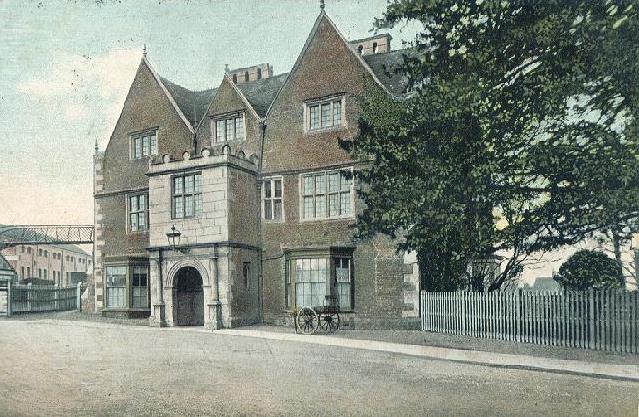 |
|
The Red Hall pictured early in the 20th century when it was being used as
the railway booking
office. This photograph is taken from a postcard sent to Mr Weber Walker
of Henery Street,
Wisbech, on 16th March 1906, from his friend Tony at No 4 Clarence
Cottages, Austerby, Bourne. "This", he wrote, "is where the Gunpowder Plot was
first hatched. About 500 years old, very fine staircase." - and so his knowledge of both history and
the house was incorrect
and had probably been gathered from local folklore. The footbridge to the
station which
can be seen on the left was erected in November 1894 and until then,
passengers had to
cross the railway line to reach the platform. The photograph below is a
black and white postcard view taken about the same time. |
|
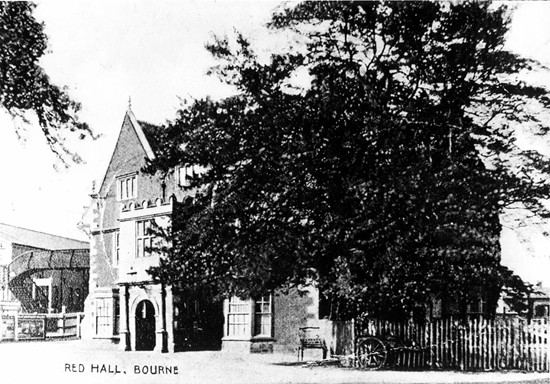 |
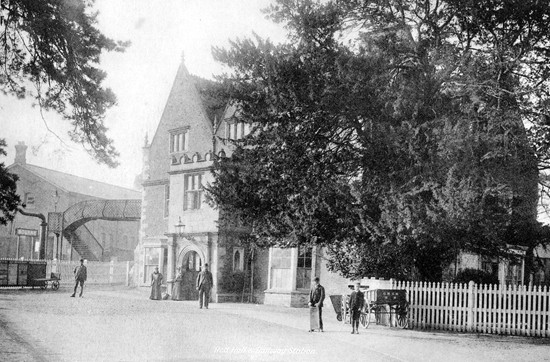 |
|
Three photographs of the Red Hall taken circa
1905 by William Redshaw who often used staff and passers-by to
inhabit his pictures and give life to the subject. The building was
then being used as the railway booking
office, showing the main line platform and the tracks running past
and the footbridge over the line.
|
|
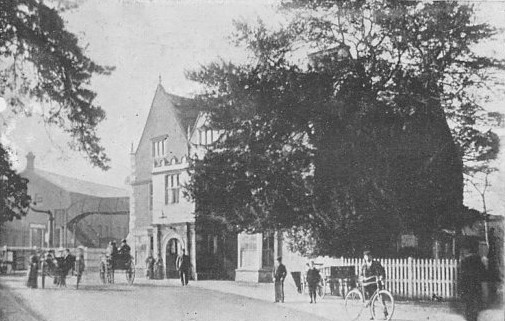 |
|
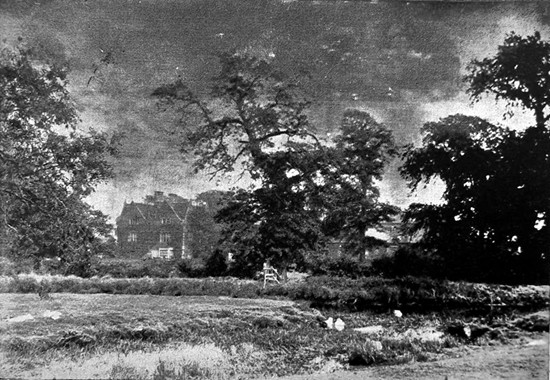 |
|
A remarkable picture postcard of the Red Hall
from 1904 showing the building as a stark and isolated mansion in a windswept
landscape under a stormy sky. |
|
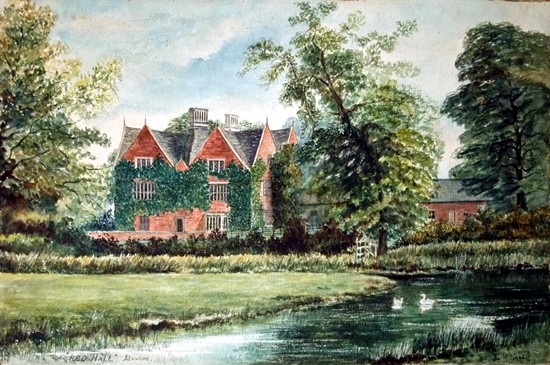 |
|
A watercolour gouache painting from circa 1905
and by L Browning who was described as "a consummate artist and a
widely travelled mountain professional person". The picture
measuring 12 inches x 9½ inches
is in private hands, having been offered for sale on eBay for £274
in June 2012. |
|
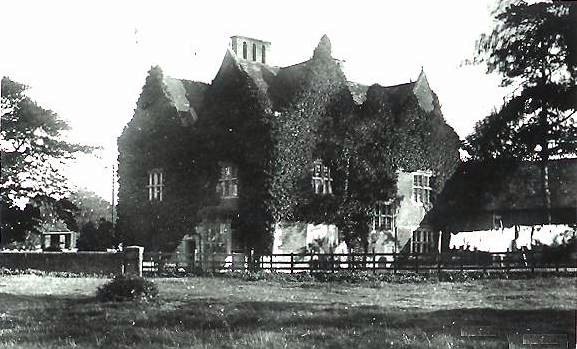 |
|
These two pictures are among the most
unusual photographs of the Red Hall, taken when it was covered
with ivy. Both were published as picture postcards by William
Pearce, stationer and bookseller, of North Street, Bourne, who
took over his father's business when he died in 1905 and both date
from that period, the second colour card being postally used in
that year. The view of the hall is from the side of the house and so we
cannot see the footbridge that led to the railway station
platforms. |
|
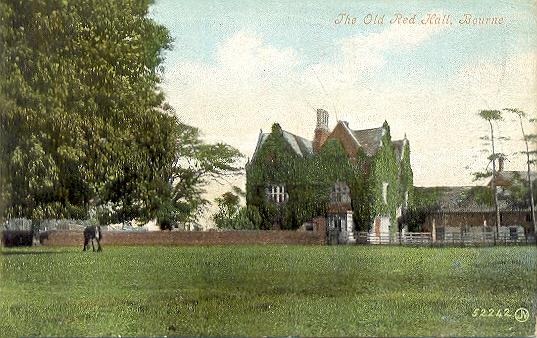 |
|
The Red Hall has been the subject of
innumerable postcards, many of the views being taken by local
photographers such as William Redshaw, and this one was issued in
the early 20th century and postally used in 1906 when the building
was still being used as the railway booking office. |
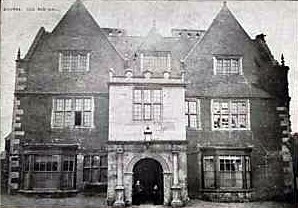 |
|
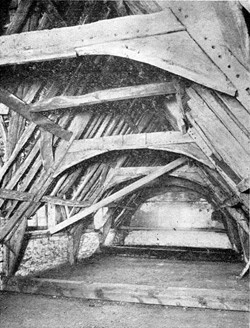 |
The oak roof timbers of the Red Hall
survived intact for centuries including 100 years of
vibrations from steam locomotives and rolling stock when the
building was being used as a railway station booking office
without apparent long term damage. This photograph was taken
in the long gallery circa 1932 and they were to remain in
their original condition until major restoration work was
carried out between 1962-74 after the building had been
acquired by Bourne United Charities. |
|
|
THE RED HALL IN 1909
The Red Hall in the pre-railway era would rank as one of
those stately homes of which England was justly proud. Even now,
in its prosaic business surroundings, it retains much of its
external attractiveness. Its many gables, its graceful solidity,
its barred and leaded panes, and its distinctive main entrance
arrest the attention of the visitor. It is one of those delightful
English homes of ancient peace that appear to "grow out of
the soil, and not to dominate the district" like the French
chateau. Formerly, it was surrounded by a deep moat (traces of
which are still perceptible), and partly by a morass. The hall
stood in its park, some of the magnificent trees of which
are still standing. Two fine gateways on the old avenue roads
leading to the main entrance now stand isolated, one (with the armorial bearings sculptured over the arch) faces the ancient
Cavalry House
(Mr Dainty's residence) while the other fronts Mr C E Andrew's house, in the Austerby.
The imperious present has hustled out the leisurely past. The hospitable gates rust on their heavy
hinges. The drives are now grass grown. Where the coach rattled
gaily now nibbles the necessary sheep. Where were my lady's
terraces, the locomotive runs. But traces of the avenues may be
seen. Old inhabitants are loud in their praises of Madam Digby's beautiful garden. An ornamental lake
spanned by a picturesque bridge, and surrounded by beautiful trees, occupied
the site now covered by the railway platform. The variety of timber in the park, as well as its
artistic arrangement, was remarkable. The fine yew tree near the main entrance is much admired.
The interior of the Hall (now converted into two residences), has necessarily undergone many alterations. The
magnificent oaken staircase, in four flights, and wide enough for the proverbial coach and pair, is unique. The balustrades
are ornamental, and the ends of the sturdy beams are carved out in
solid oak. The upper rooms are lofty, and command a fine view of
the surrounding country. The stone mullions, and small leaded
panes, preserve an air of antiquity. Running the length of the eastern side is a
gable-room, which is traditionally known as the ball-room. Another gable-room with an arched roof, contains an altar,
and is known as the chapel. Thus the imaginative visitor may readily conjure up mental pictures of
the pleasure and piety of a former day.
Romance touches realism when we discover in the wall of the chamber adjoining the chapel a secret entrance. The
wall space is sufficiently commodious. A ray of light creeps in
from an ivy-covered opening above. It is said that refugees (such
as Fathers Garnet or Gerard, the Jesuits) might find pretty secure
accommodation in the false roof, or make their exit in time of
danger by a way that opened into a cupboard, concealed in one of
the walls of a basement room.
- from Historic Bourne
by Joseph J Davies (1909) |
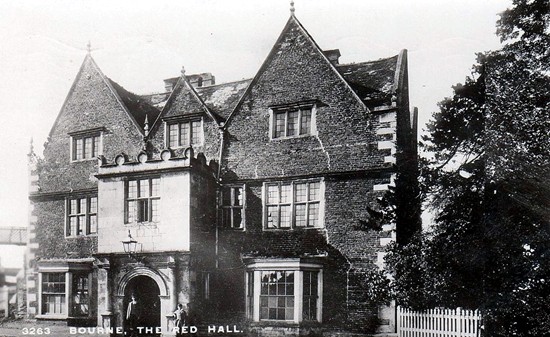 |
|
The Red Hall in 1914 photographed for a
picture postcard. |
|
The Red Hall remained a favourite subject
for painters and photographers and often appears on picture
postcards of the period which were sent all over the world.
This shot was taken around 1920 by Ashby Swift when the
building was still being used as the railway station booking
office and like his contemporary, William Redshaw, he
recruited a young onlooker to enhance the scene, a lad who was
most probably one of the children of the stationmaster, Thomas
Glendening, whose family lived at the Red Hall. |
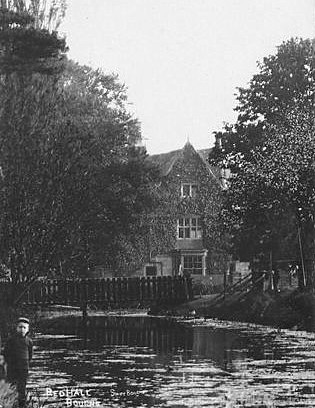 |
|
|
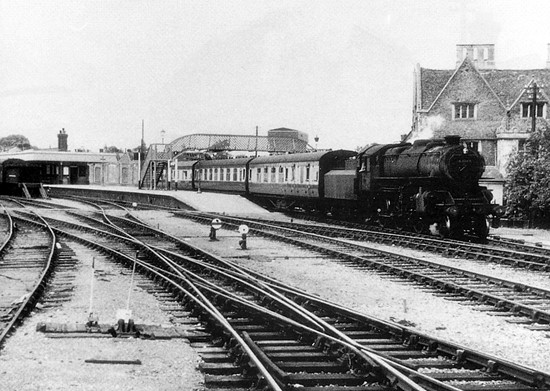 |
|
A steam locomotive leaving the station for
Spalding in 1958 with the Red Hall on the right (above) and another
view of the station platform and pedestrian crossing bridge to the
Red Hall from circa 1950 (below). |
|
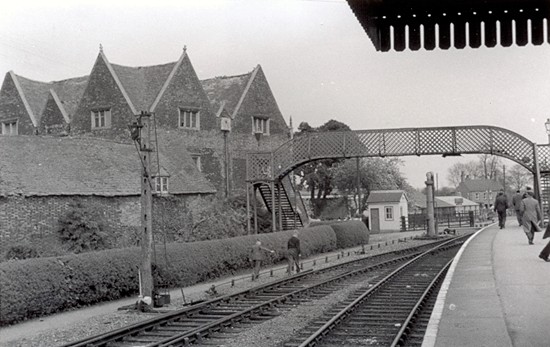 |
|
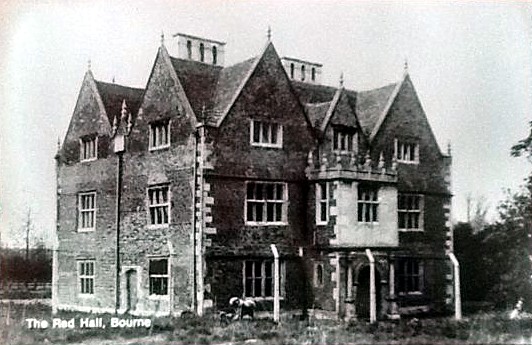 |
|
A postcard view of the Red Hall in 1950. |
|
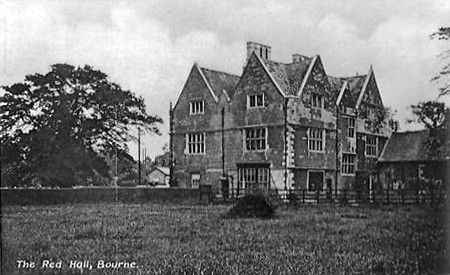 |
|
A postcard view from circa 1960 (above) when the future
of the building was uncertain and a similar shot taken the following
year (below). |
|
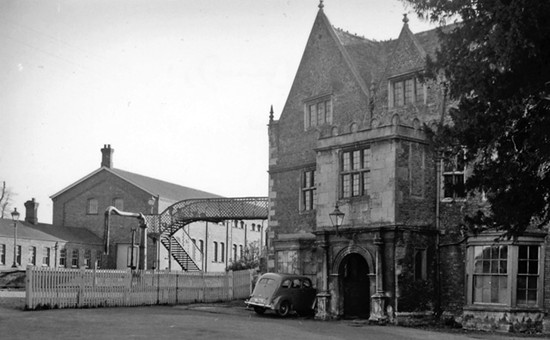 |
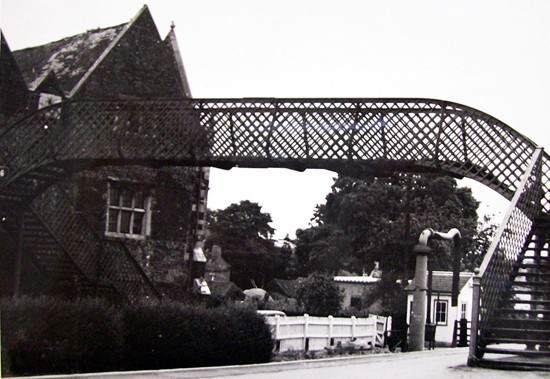 |
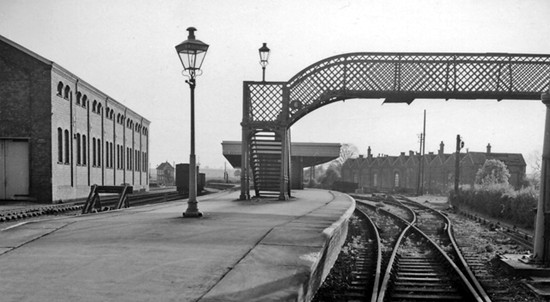 |
|
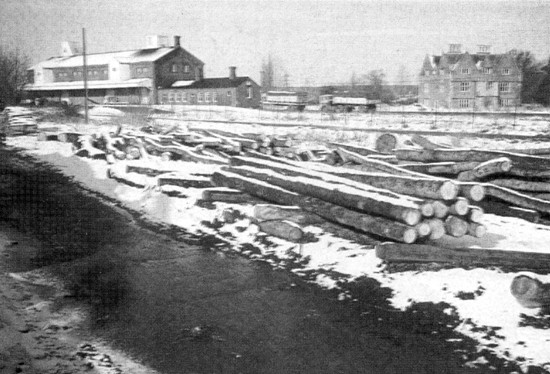 |
|
The Red Hall during the winter of 1975
photographed from Whatton's timber yard with the old railway station
site on the left. By 2009, these buildings had been demolished and
the area was being redeveloped for new housing. |
|
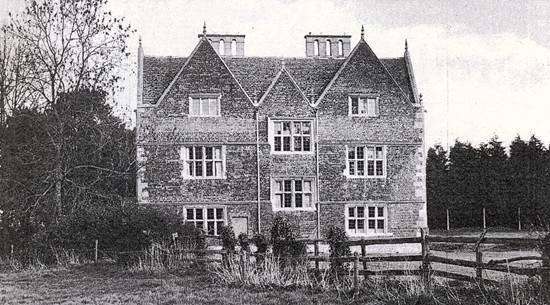 |
|
THE RED HALL IN 1994
Our first sight of Bourne was the attractive Red Hall, a
recently restored 17th century mansion, made, of course, out of
red brick. At one time it was used as the railway station house.
The path passed a large pond overhung by a series of willows,
before going under an old mill. The pond was probably artificial
created to act as a mill race, and may date from the 12th century
Augustinian priory in which Robert Manning created the basis of
the modern English language.
- from a walking article by Paul Gosling published
by The Independent on 7th April 1994 |
See also The Red Hall

Go to:
Main Index Villages
Index
|